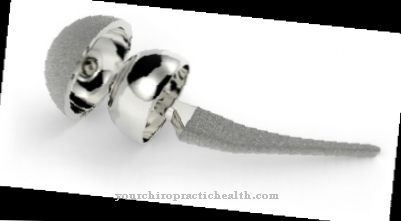As Provisional a temporary denture is called. It serves as protection of the tooth until the final restoration.
What is a temporary solution?

A temporary is a denture that is temporarily put on. In this way, the tooth can be protected until further restoration. The temporary also serves as a temporary replacement for a tooth gap.
A temporary is used to prepare dentures, inlays, crowns, bridges or implants. In contrast to permanent dentures, temporary dentures are only used for a transitional period. In this way, permanent dentures take the place of the temporary restoration, which means that the dental treatment is completed.
Shapes, types & types
Dentists differentiate between different types of temporary restoration. For example, there are short-term and long-term temporaries. Short-term temporaries can be made in the mouth. In the case of a long-term temporary, on the other hand, a special impression is required in a dental laboratory. It is used when the healing process or regeneration process takes a long time.
With the help of a long-term temporary, an occlusion or planned changes to the jaw relation can also be made. Furthermore, the dentist can observe over a longer period of time whether the therapy is successful. Only when this is the case is the final restoration used.
A long-term temporary restoration can also be useful after a root canal treatment or a surgical procedure to bridge the healing phase. This makes regeneration easier for bones and soft tissue.
There are various options available for treating tooth gaps with a temporary. There are temporary bridges for neighboring teeth that need a crown, steel-based clasp dentures, simple plastic-based clasp dentures, so-called Maryland bridges, which are adhesive bridges, and temporary implants.
A simple clasp prosthesis is a denture that the patient can remove. The prosthesis has simple wire clips and a plastic base that rests on the gums. The cost of a simple clip prosthesis is cheap, but it is not very comfortable to wear. The holding of the clamps is also not considered optimal.
In contrast to the simple clamp prosthesis, the cast steel clamp prosthesis is equipped with a steel frame, which ensures a relatively stable fit. An adhesive bridge is made in a laboratory and has so-called wings that are used to attach to the adjacent teeth. It is primarily suitable for the anterior region. In the case of complete toothlessness, a full denture or a temporary implant are used.
Structure, function & mode of operation
A long-term temporary is usually made from different plastics. These include glass fiber reinforced composites, polymethymethacrylates (PMMA) and bis-GMA composites. If the temporary restoration is small, it is possible to make it directly in the mouth with the help of an impression taken beforehand. After the preparation, the dentist fills the impression on the ground tooth with plastic and inserts it into the oral cavity. This creates a hollow shape in which the plastic can harden quickly like a crown. The temporary crown is worked out with fine polishers and burs.
As a rule, a long-term temporary is made in a dental laboratory. For this purpose, a working model is first made from plaster of paris. The dental technician then applies the plastic to the model of the prepared tooth. For reasons of stability, a steel framework can also be incorporated into the temporary. Finally, the plastic is chemically hardened through the action of temperature and pressure. After milling and polishing, the long-term temporary is ready and can be used in the dental practice. Zinc oxide eugenol cements are mostly used as temporary fastening material. However, if the cement is attached using the adhesive technique, a eugenol-free cement is required.
The temporary structure must meet a number of requirements for optimal functionality. These include tolerance, oral resistance, abrasion resistance, color stability and hygiene. It is particularly important to withstand conventional mechanical loads such as speaking, chewing and biting. In addition, the adaptability of a long-term temporary to the progressive success of the treatment is important.
When fabricating the temporary, the dentist must also pay attention to the patient's material compatibility. Otherwise there is a risk of unpleasant irritation or even a rejection reaction while wearing. Despite all the effort, a temporary solution is never as functional and comfortable as the final denture.
You can find your medication here
➔ Medicines against tartar and tooth discolorationMedical & health benefits
Temporary restorations are of great importance for the patient's dental health. This ensures that the patient can eat and speak normally during the longer treatment period. At the same time, they have a preventive effect on misalignments of neighboring teeth due to tooth gaps.
If the teeth have already been ground or abraded by the dentist, the temporary protection protects them from heat, cold, chemical stimuli such as sugar or acid, friction, pressure and harmful bacteria. Sometimes the transition phase is also used to build up the jawbone as part of an orthodontic correction.
But they also play an important role in terms of aesthetics. The treatment of the teeth is not visible to outsiders by wearing a temporary solution.
Temporary dentures are often used when wound healing or the healing process of an implant is still in progress. If, for example, a root canal treatment is carried out under an artificial tooth crown, the dentist first places a temporary restoration after removing the crown. Only when the inflammation has completely healed can the crown be reattached.
While short-term temporaries usually do not stay in the oral cavity for more than two to four weeks, long-term temporaries can be worn for several months.






.jpg)


















.jpg)


